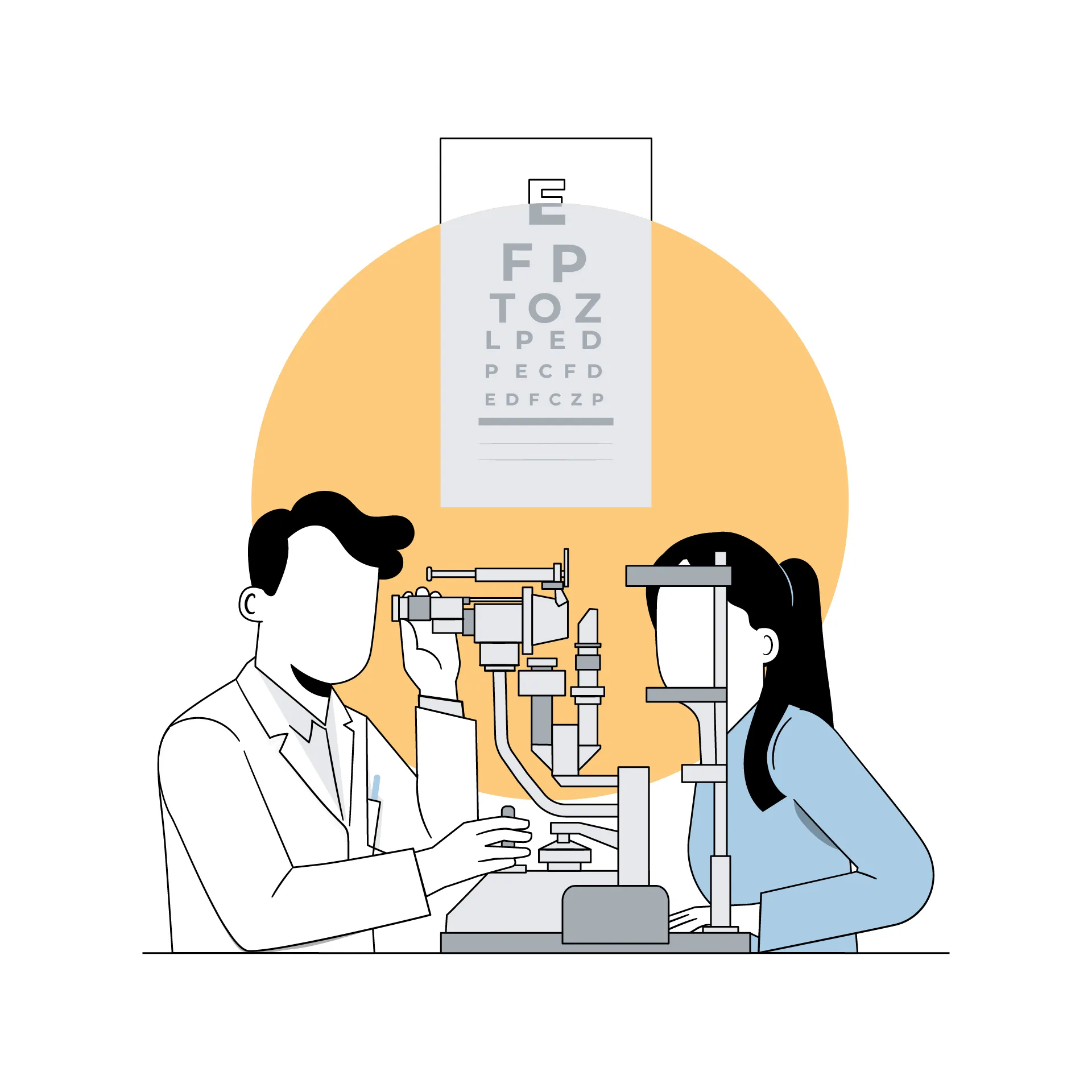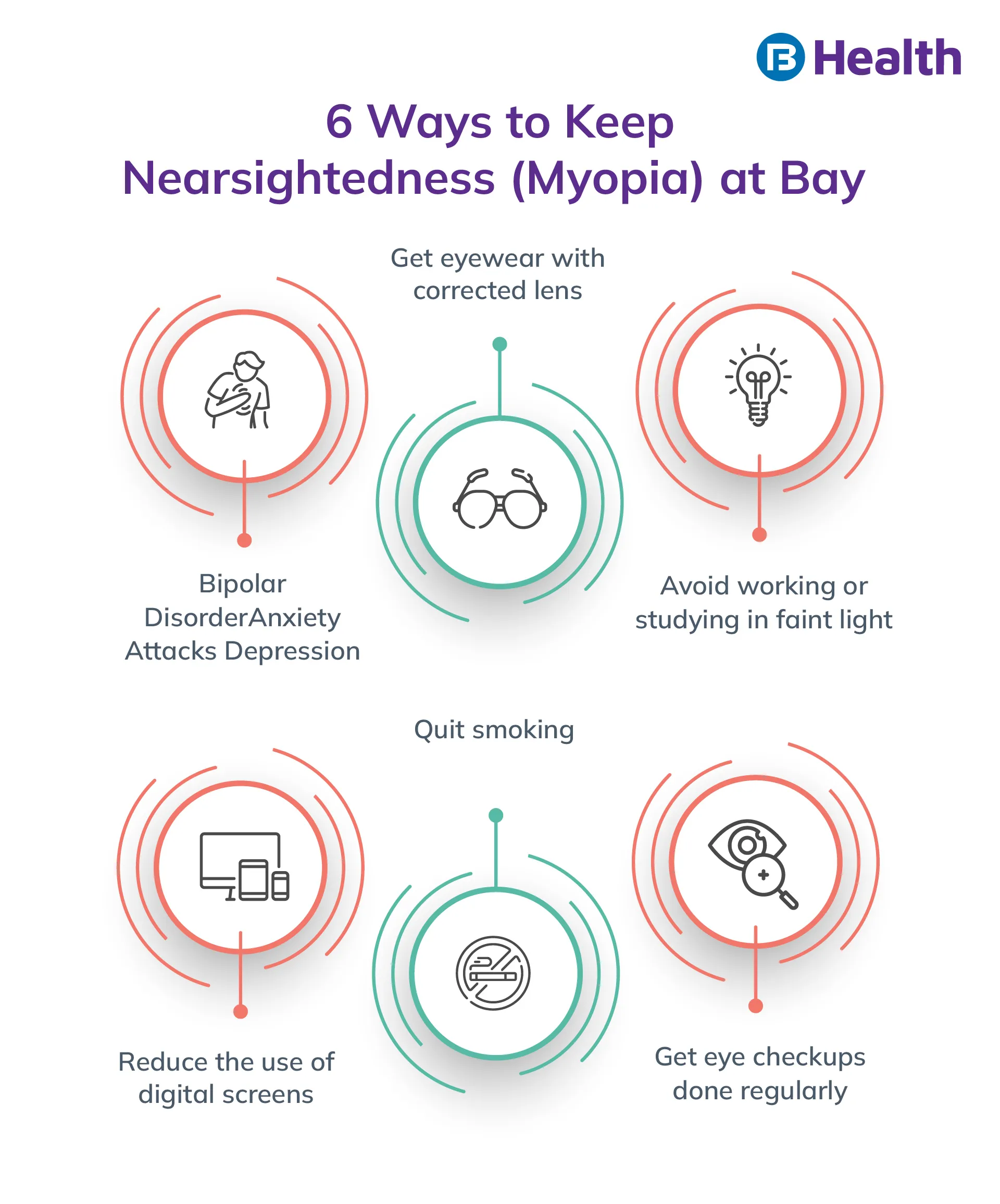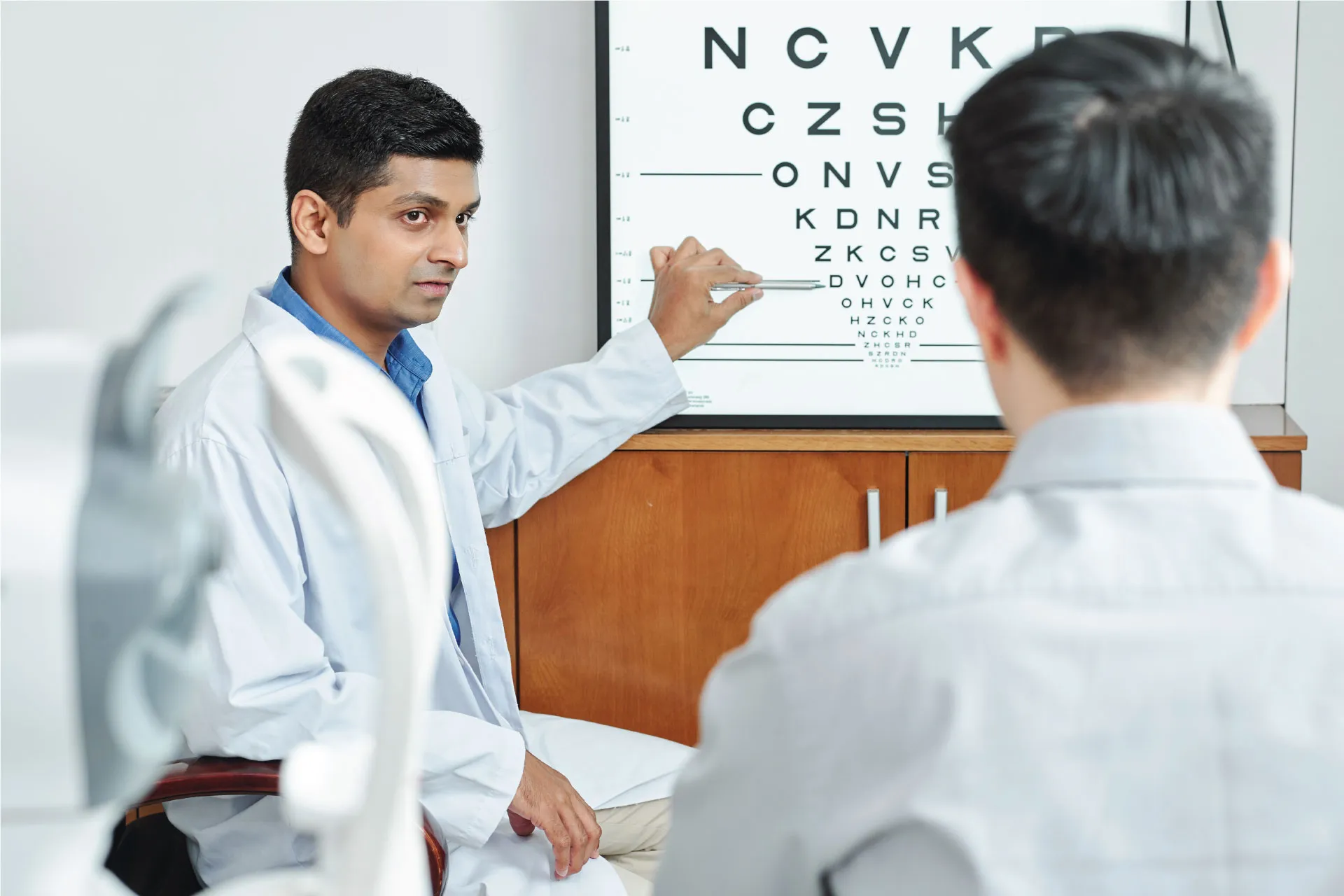Ophthalmologist | 5 min read
Nearsightedness (Myopia): Causes, Diagnose and Treatment
Medically reviewed by
Table of Content
Synopsis
Nearsightedness (Myopia) can be a result of family history or age. A common sign of myopia is blurred vision of distant objects. Your doctor will advise myopia treatment options based on your health.
Key Takeaways
- Nearsightedness (Myopia) affects your vision to see faraway objects
- Myopia symptoms include headache and excess blinking due to stress
- Doctor will conduct assessment and then advise myopia treatment options
If you see distant objects in a blurry fashion, you could have nearsightedness (myopia). Myopia is an eye condition where your far-away sight is compromised. As per a study, nearsightedness (myopia) is affecting more and more of the urban Indian population. Its prevalence is expected to increase to about 32% in 2030 and 40% in 2040 [1]. So, controlling the rise of nearsightedness (myopia) is important to avoid its severity.
Having a better grasp of this condition can help you reach your doctor at the right time and get your eyes treated. There are many myopia treatment options available, along with a few lifestyle changes to prevent it. Read on to know more about nearsightedness (myopia) and how it is treated.
What is Myopia?
Nearsightedness (myopia) is one of the commonly prevailing eye conditions where you cannot see distant objects clearly. This happens when light rays do not refract correctly, which causes blurry vision for far objects but a clear vision for near objects. Myopia tends to develop during childhood and may worsen over time. Knowing the underlying cause and the common symptoms of nearsightedness (myopia) is important to control the serious effects of this condition during adolescence. A major complication of nearsightedness is high myopia, where the structure of your eyeballs changes.
Symptoms of Nearsightedness (Myopia)
Myopia has a number of symptoms. Different people may experience different ones. Some of the common signs of nearsightedness (myopia) are
- Blurred vision for objects that are distant
- Headaches caused by excess stress on your eyes
- Urge to blink more to see clearly
- The necessity of getting closer to see the objects clearly
- Frequent rubbing of eyes
- Difficulty while driving
Nearsightedness (myopia) also impacts your ability to notice things while you are watching something or walking on the street. Myopia puts pressure on your eyes to focus more and see things clearly. A possible sign of nearsightedness (myopia) in childhood is difficulty in reading clearly in a classroom where the blackboard is far away or bringing your head closer to the answer sheet or paper while writing.
Additional Read: Health Insurance Facts to Know
What Increases your Risk of Nearsightedness (Myopia)?
There are a few factors that make it more likely for you to suffer from nearsightedness (myopia).
- With age, the risk of myopia increases as the shape of your eye lens changes during your childhood for myopic tendencies.
- Stressing your eyes can also cause myopia temporarily. With time, this can cause permanent damage to your eye health.
- If your family members or any relatives have nearsightedness (myopia), it can increase your chances of having it.
- Exposure to digital screens, such as working on the computer for hours or watching a screen for long hours, can increase your risk of nearsightedness (myopia).
- Health conditions such as diabetes can also cause nearsightedness (myopia) in adults.
- Nearsightedness (myopia) can also develop in those who stay most of the time indoors.
What Causes Myopia?
The exact cause of myopia is still unclear, and research suggests that it can be a result of family history as well as lifestyle habits. Nearsightedness (myopia) basically results due to a refractive error in your eyes. This means that your cornea or lens is not even smooth as it should be. This error causes the light to refract incorrectly and focus on the objects in front of it instead of on it. As a result, your brain can’t process any optical image that lets your eyes focus on the object in front of your retina, resulting in fuzzy images.
An important factor to note is that your eye shape changes when you develop nearsightedness (myopia) as the cornea (the clear area that covers your eyes) becomes round. Nearsightedness (myopia) is a minor stage of optical defects. Your doctor will thoroughly examine your eye and the changes before giving you a diagnosis.

Diagnose and Treatment of Nearsightedness (Myopia)
Your doctor may diagnose myopia when a normal eye exam indicates a defect in your eyes. These exams are focused on your eye health and your vision, which are monitored along with your medical and family history. The standard eye exams for nearsightedness (myopia) will have the following.
- Refraction tests to determine nearsightedness (myopia) for refraction error in your eyes
- Testing the sharpness of your eyes to check for defects caused by nearsightedness (myopia)
- Determining any defects in the retina and the optic nerve that may cause myopia
- Assessing your pupils’ response to bright light
- Eye movement and eye pressure test to check for myopia
- Examining your peripheral vision
- Medical history to check for side effects of certain medications that can result in myopia
After the diagnosis of myopia, your doctor will suggest the best cure for nearsightedness (myopia) based on your health. Spectacles with corrected lenses and surgeries such as LASIK are effective treatments for myopia. These myopia treatment options can potentially increase your eyesight [2].
Severe or high myopia can put your eye health at a greater risk. It can lead to chronic eye conditions like cataracts, glaucoma, and retinal detachment. You may also have a higher chance of suffering from conjunctivitis if you have myopia. Speak with an ophthalmologist and treat nearsightedness (myopia) at an early stage to protect your eyes from further risk.
Additional read: World Glaucoma Week 2022Now that you know what causes myopia and what it entails, you can go for an online doctor consultation on the Bajaj Finserv Health app or website. Consult with some of the best ophthalmologists and address your eye concerns, be it for nearsightedness (myopia), red eyes, or night blindness, from the comfort of your home. Under their guidance, you can also understand how to take better care of your eyes. With these proactive measures, you can ensure your eyes remain healthy! If you want to protect yourself from any disease, you can avail of health insurance.
References
- https://pubmed.ncbi.nlm.nih.gov/33860952/#:~:text=Results%3A%20The%20prevalence%20of%20myopia,2040%20and%2048.14%25%20in%202050.
- https://www.ncbi.nlm.nih.gov/pmc/articles/PMC6688407/
Disclaimer
Please note that this article is solely meant for informational purposes and Bajaj Finserv Health Limited (“BFHL”) does not shoulder any responsibility of the views/advice/information expressed/given by the writer/reviewer/originator. This article should not be considered as a substitute for any medical advice, diagnosis or treatment. Always consult with your trusted physician/qualified healthcare professional to evaluate your medical condition. The above article has been reviewed by a qualified doctor and BFHL is not responsible for any damages for any information or services provided by any third party.





